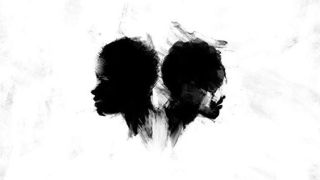By Vaidik Trivedi
News Editor
Jordan Peele, the Oscar winning debutant director of “Get Out,” is back with a mind bending thriller, “Us.” With incredibly high expectations of the audience from Peele’s first release, he established himself as a creative-conceptual filmmaker rather than a one hit wonder.
Focusing on the modern social fear and disgust towards outsiders, the movie uses mirror imagery both figuratively and literally throughout the film to point out the hidden satires of anxiety and fear related to an outsider, is in all of ‘Us.’
The movie in itself is a sly dig at the racial tension in the gliberal United States. In the initial few minutes, Peele sets the movie to be a thriller by introducing the concept of millions of empty tunnels spawning underneath the surface where no one knows what happens or who lives in them.
Just like ‘Get Out,’ the movie takes off with ease. Introducing the main characters, the Wilson family goes out for a picnic on the beach in Santa Cruz. Adelaide, the mom of the Wilson family, is a bit iffy about going to the beach because of a past experience of getting lost in a mirror maze on the beach. She experienced something life altering. The family drives these worries away to the beats of the classic “I Have Got 5 on It,” by Luniz of 1995 and visits the beach for some family time.
But you feel something wrong in your gut when everything is running perfectly for the Wilsons.
Enter the Tethered, the bane of existence of basically everyone. Tethereds are the failed products of a failed U.S. government experiment to create controllable human clones who live in the tunnels underneath.
The doppelgängers of the Wilsons are introduced standing in their driveway, waiting to slaughter them and take their place instead.
Us is not about some weird mutants living underground coming to kill a family, but rather is about inheritance, fear of aliens and the US. The movie raises questions about who gets to be Us in the United States of America, addressing the rising white anxiety towards the people of color- aggravated under President Trump’s reign.
People and families like the Wilson’s who lived above the surface enjoyed the finer things in life like better food, cars, and a sun to feel on your skin, while the Tethered stayed underneath the ‘selected’ in tunnels, hunting and eating rabbits to survive.
The Tethered stripped of choice, stayed down in the tunnels managing the lives of the people above finally decide to break the chains, kill the ‘masters’ above and replace them.
Us is the narration of the people ‘below’ rising and taking power, which might have violent ends.
The Wilsons when faced by their doppelgängers must confront their discomfort and fear when faced with versions of themselves stripped of every privilege.
The twist in the tale is when we discover that Adelaide, the mom of the Wilson family is not who we thought she is (spoiler alert!)- but is one of the Tethered who swapped her real-world counterpart years ago in the mirror maze on the beach.
The movie takes the example of Adelaide who is always looking over her shoulders, expecting a retaliation from the girl whose life she stole and reacts with fear and aggression when confronted by her years later - much like us, the U.S.
The beauty of the direction is that it relates to two different perspectives of the audience at the same time. The black viewers can relate to the Tethered, striking back at the masters for being treated unjustly while the non-black community will relate more to Adelaide, filled with regret and fear of her past sins which makes her violent.
Us is filled with easter eggs that will leave the viewer’s mind boggled by the end. With earning over $33 million since its release, the movie has become an instant hit and should be on everyone’s must watch list this year.


